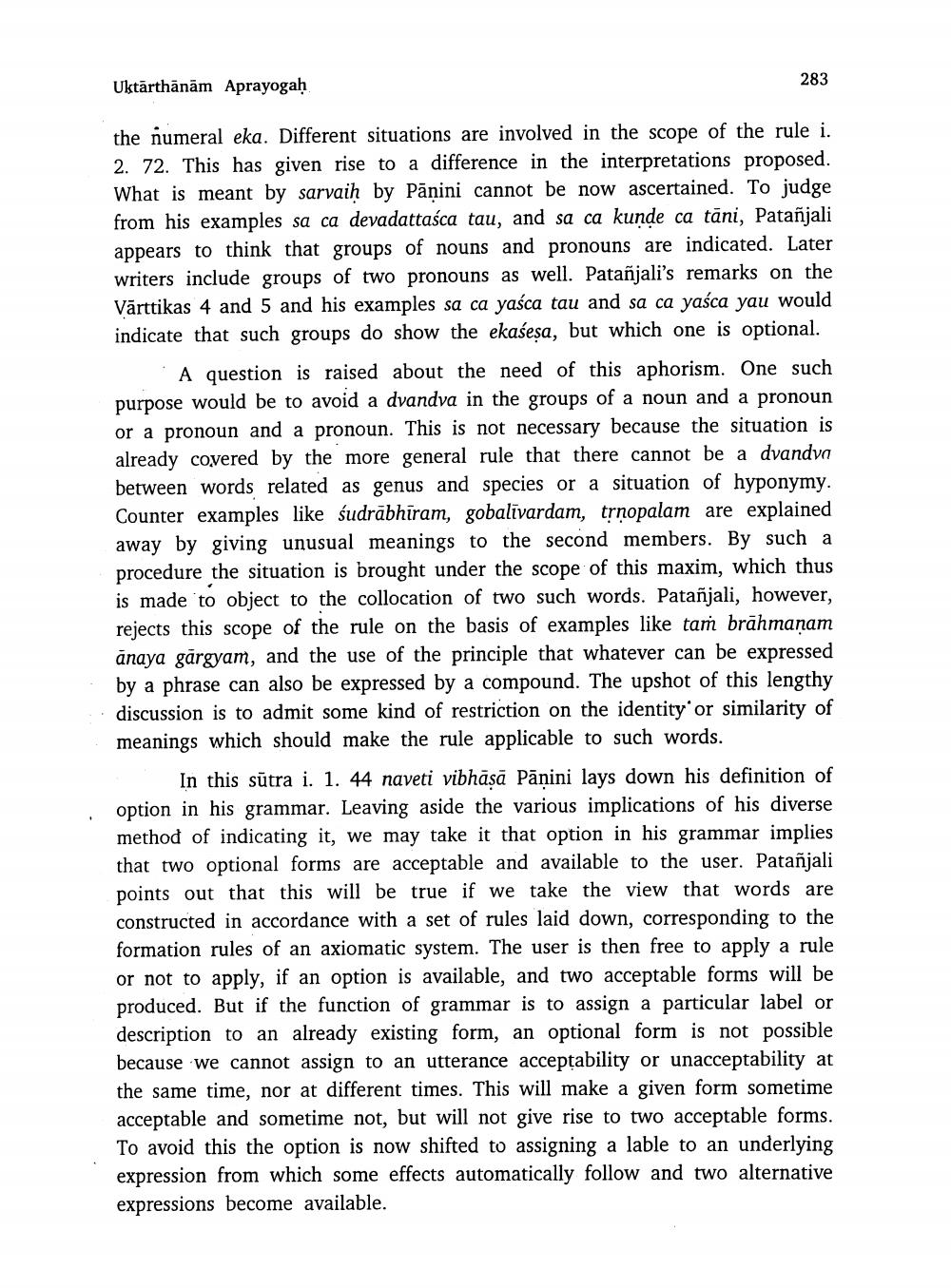________________
Uktārthānām Aprayogah
283
the numeral eka. Different situations are involved in the scope of the rule i. 2. 72. This has given rise to a difference in the interpretations proposed. What is meant by sarvaiḥ by Pāṇini cannot be now ascertained. To judge from his examples sa ca devadattasca tau, and sa ca kunde ca tāni, Patañjali appears to think that groups of nouns and pronouns are indicated. Later writers include groups of two pronouns as well. Patañjali's remarks on the Vārttikas 4 and 5 and his examples sa ca yaśca tau and sa ca yaśca yau would indicate that such groups do show the ekaśesa, but which one is optional.
A question is raised about the need of this aphorism. One such purpose would be to avoid a dvandva in the groups of a noun and a pronoun or a pronoun and a pronoun. This is not necessary because the situation is already covered by the more general rule that there cannot be a dvandva between words related as genus and species or a situation of hyponymy. Counter examples like sudrābhīram, gobalīvardam, trnopalam are explained away by giving unusual meanings to the second members. By such a procedure the situation is brought under the scope of this maxim, which thus is made to object to the collocation of two such words. Patañjali, however, rejects this scope of the rule on the basis of examples like tam brāhmanam anaya gārgyam, and the use of the principle that whatever can be expressed by a phrase can also be expressed by a compound. The upshot of this lengthy discussion is to admit some kind of restriction on the identity or similarity of meanings which should make the rule applicable to such words.
In this sūtra i. 1. 44 naveti vibhāsā Pānini lays down his definition of option in his grammar. Leaving aside the various implications of his diverse method of indicating it, we may take it that option in his grammar implies that two optional forms are acceptable and available to the user. Patañjali points out that this will be true if we take the view that words are constructed in accordance with a set of rules laid down, corresponding to the formation rules of an axiomatic system. The user is then free to apply a rule or not to apply, if an option is available, and two acceptable forms will be produced. But if the function of grammar is to assign a particular label or description to an already existing form, an optional form is not possible because we cannot assign to an utterance acceptability or unacceptability at the same time, nor at different times. This will make a given form sometime acceptable and sometime not, but will not give rise to two acceptable forms. To avoid this the option is now shifted to assigning a lable to an underlying expression from which some effects automatically follow and two alternative expressions become available.




